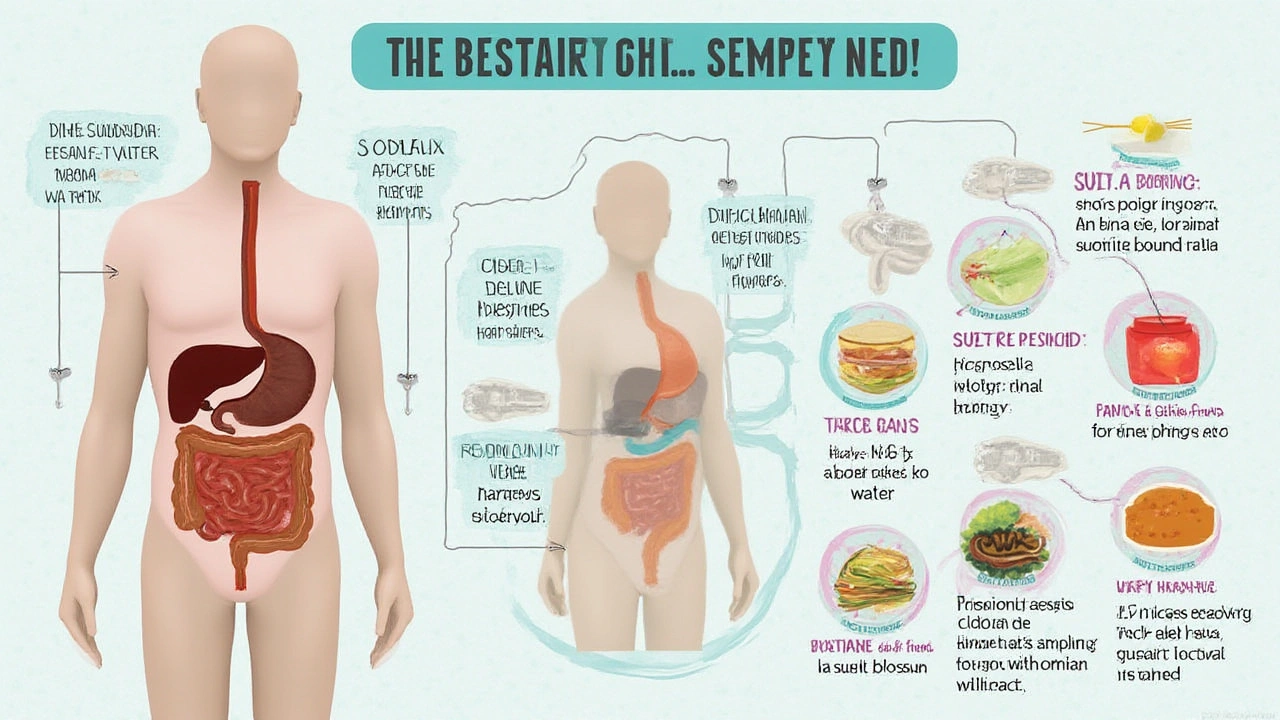What Is Sodium Bloating and Why It Happens
If you’ve ever woken up with a tight waist or noticed a puffy face after a salty meal, you’ve experienced sodium bloating. The body holds onto extra water to balance the extra salt you ate. This water‑weight shows up as swelling in the belly, ankles, hands, or even the eyes. It’s not fat, but it can feel uncomfortable and make you look larger.
How Salt Triggers Water Retention
Sodium lives in every cell and in the fluid outside cells. When you eat more than your kidneys can filter in a short time, they signal the body to keep water in the bloodstream. That extra fluid stays in the spaces between cells, creating the swollen feeling we call bloating. The more processed foods, fast‑food meals, and salty snacks you eat, the harder your kidneys have to work.
Hormones also play a role. Aldosterone, a hormone released by the adrenal glands, tells the kidneys to retain salt and water. Stress, lack of sleep, and certain medications (like some blood pressure pills) can raise aldosterone levels, making bloating worse even if your diet isn’t super salty.
Practical Ways to Cut Sodium Bloating
1. Read Labels – Look for “sodium,” “salt,” or “sodium chloride” on packaged foods. Items with more than 200 mg per serving are considered high‑sodium. Choose lower‑sodium alternatives whenever possible.
2. Hydrate Smartly – Drinking enough water helps flush excess salt out of your system. Aim for 8‑10 glasses a day, and add a splash of lemon or cucumber to make it more appealing.
3. Eat Potassium‑Rich Foods – Potassium balances sodium. Bananas, sweet potatoes, spinach, and beans are excellent choices. Adding a daily serving can help reduce water retention.
4. Limit Processed Snacks – Chips, crackers, deli meats, and canned soups are sodium heavy. Swap them for fresh fruit, nuts (unsalted), or homemade popcorn with just a pinch of sea salt.
5. Move Your Body – Light exercise, like a brisk walk or gentle yoga, boosts circulation and encourages your kidneys to expel extra fluid.
6. Watch Alcohol and Caffeine – Both can dehydrate you, prompting the body to hold onto water when you re‑hydrate. Moderation is key.
For a quick reset, try a 24‑hour low‑sodium diet: eat fresh vegetables, lean proteins (chicken, fish, tofu), and whole grains. Avoid sauces, cheese, and processed meats during that period. You’ll often notice less puffiness within a day.
When to Seek Professional Help
If bloating persists despite cutting salt, or if you experience painful swelling, shortness of breath, or rapid weight gain, talk to a doctor. Chronic water retention can signal heart, liver, or kidney issues that need medical attention.
In most cases, simple changes to your diet and daily habits will keep sodium bloating at bay. By watching what you eat, staying hydrated, and moving regularly, you can enjoy a flatter stomach and a more comfortable day without the constant “puffy” feeling.
